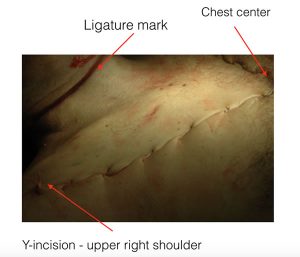Crime Writers’ Words of the Day: Make Your Stories Bleed Realism
When I crack the covers of a James Lee Burke novel, the words on the page begin to dance and sing. The odor of swamp water oozes out into the air. I feel the humidity and I smell the delicious odors of meat cooking on open fires. I see the mist on the bayou. More importantly, though, I’m there, in that book following along with Dave and Clete and Alafair as they go about their journey to the final page.
In The New Iberia Blues, Burke described a young deputy sheriff who’d grown up in a small town on the Louisiana-Arkansas line as having an accept that sound like “someone twanging a bobby pin.” Well, y’all, I instantly heard the officer’s voice ring as clear as a bell from that point forward.
The author described this fictional deputy, Sean McClain, as “slender, over six feet, his shoulders as rectangular as a coat-hanger wire inside his shirt, his stomach as flat as a plank.”
In that brief passage, readers had a mental picture of the lawman. He was fit and strong and tall.
Burke also, within just a few lines, brilliantly gives the reader a look inside the mind of Deputy McClain, describing his sincere innocence, and how he views life and approaches it from day to day. And he used his lead character, Dave Robicheaux, to introduce us to the man.
Robicheaux said to the reader, ” … I drove down to the tip of Cypremort Point with a young uniformed deputy named Sean McClain, who had seven months experience in law enforcement and still believed in the human race and woke up each day with birdsong in his head.”
Sean McClain was now a person I knew—how he walked, talked, and how he would confront criminals and witnesses. I knew his approach to investigations—reserved and with a glass half-full mindset. His lack of experience would cause him to first give the benefit of the doubt before looking at someone’s dark side. Rookie innocence. I’ve seen a hundreds of times.
So yes, words are the key to making a story come alive. But only when they’re assembled in the correct order and only if the selected words used are absolutely necessary to advance a scene. Too much is, well, too much.
So, without further ado, here are your …
Crime Writers’ Words of the Day
Incised Wound – A wound caused by a sharp weapon and is typically longer than it is deep. These types of wounds usually bleed quite readily.
Infanticide – The killing of an infant shortly after the child is born.
Infarct – An area of dead tissue (necrosis) caused by a lack of blood supply. A Myocardial infarction (MI) refers to the myocardium, the heart muscle itself, and the changes that occur in it when the muscle is suddenly deprived of fresh blood. When blood ceases to flow to the heart muscle it causes necrosis, the death of myocardial tissue. This is a heart attack.
K.
Klismaphillia – The use of enemas for sexual arousal/pleasure.
L.
Latent Prints – Fingerprints that are NOT visible to the human eye. (Patent prints are visible).
Ligature – Any string, rope, material that’s used to bind or tie, such as a household extension cord used by a killer to strangle his victim.
 The post-autopsy photo below/right shows a deep ligature mark on the neck (upper left). Note the post-autopsy stitching of the “Y” incision.
The post-autopsy photo below/right shows a deep ligature mark on the neck (upper left). Note the post-autopsy stitching of the “Y” incision.
The murder weapon was an extension cord, the typical cord (left) found in many homes.
T o help orient – the head is to the left, just outside the upper edge of the photo. The Y-stitching begins at the bottom left (upper right shoulder area) and continues to the mid chest area where it’s met by a like incision that began at the upper left shoulder area (upper area of the image) and continued to the chest center. The incision continued down to the area below the navel (bypassing the bellybutton).
o help orient – the head is to the left, just outside the upper edge of the photo. The Y-stitching begins at the bottom left (upper right shoulder area) and continues to the mid chest area where it’s met by a like incision that began at the upper left shoulder area (upper area of the image) and continued to the chest center. The incision continued down to the area below the navel (bypassing the bellybutton).
Livor Mortis (lividity) can help investigators determine the time of death. The staining of tissue normally begins within the first two hours after death. The process reaches it’s full peak in eight to twelve hours.
If the victim is moved during the first six hours after death the purplish discoloration can shift, causing the new, lowest portion of the body to exhibit lividity.
After a period of six to eight hours after death, lividity becomes totally fixed. Moving the body after eight hours will not change the patterns of discoloration. Therefore, investigators know a body found lying face down with lividity on the back, has been moved.
Rookie officers have often confused lividity with bruising caused by fighting.
Remember, ambient air temperature is always a factor in determining the TOD (time of death). A hot climate can accelerate lividity, while a colder air temperature can slow it down considerably.
M.
Marbling – Not to be confused with the desirable tenderness caused by the intermixing of fat and muscle fibers in good beef, marbling, as it relates to a dead body, is the result of damaged blood cells that leak from deteriorating vessels. Bacteria converts haemoglobin molecules, the molecules that once carried oxygen around the body, into sulfhaemoglobin.
When the sulfhaemoglobin molecules present in settled blood (once the heart stops beating) it causes the skin to display a marbled, greenish-black appearance. this is a characteristic of a body that undergoing decomposition. These vessels, mostly the veins, often have the appearance of the squiggly lines of a roadmap. Marbling generally appears on the skin in early stages of decomposition, approximately 3 to 5 days, or so.

Marbling
Midline – The center of the head, chest, and abdomen, as if an imaginary line is drawn from top to bottom.

Midline
Mysophilia – Sexual attraction to filthy, dirty people, animals, clothing, etc.













I LOVE this series. Thank you. It’s extremely helpful. And I adore Mr. Burke’s writing. He makes me smell and sweat Louisiana. I once went from a Robert Crais book to a Dave story, which I told a friend was like being dumped from a sauna into a steam bath.
Is there any chance of getting a female roommate for WPA ’19?
Good tips Lee. Thank you.